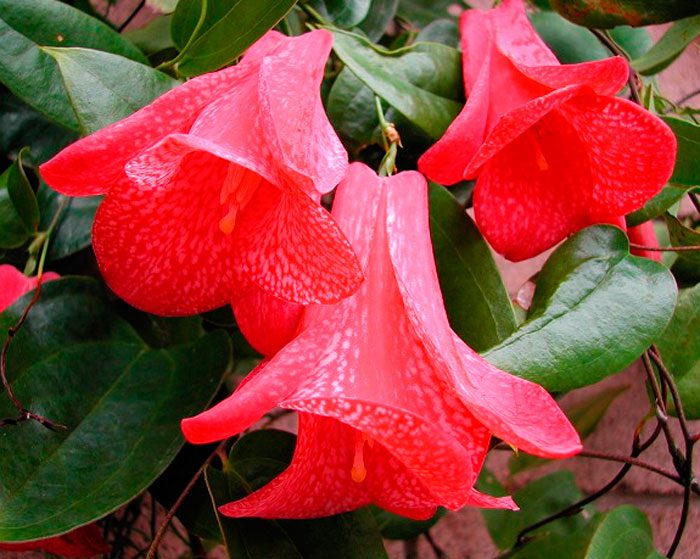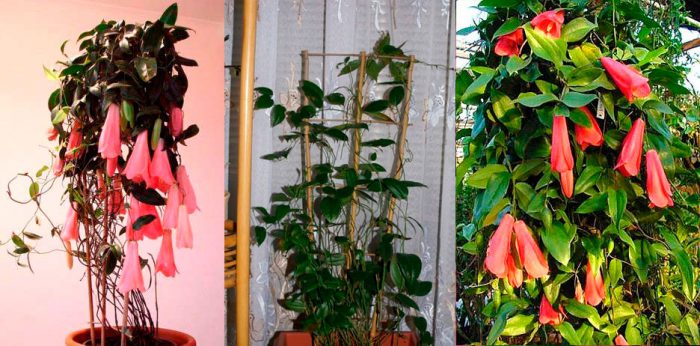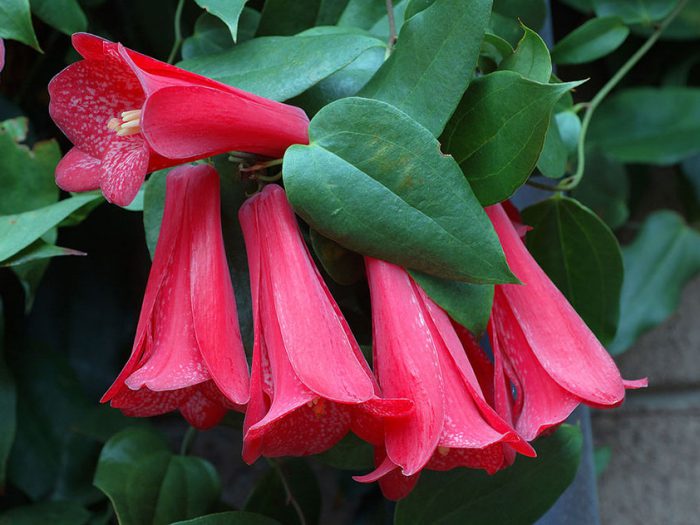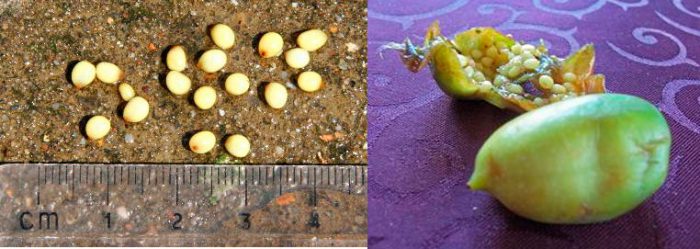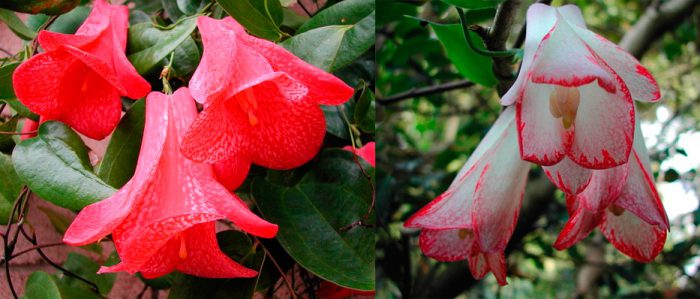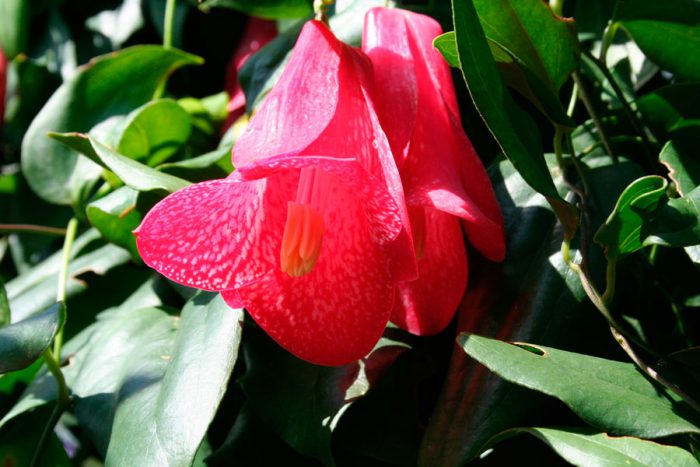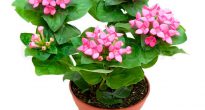Finding a lapagerie in a flower shop is a huge success. The thing is that it is quite difficult to find it outside its habitat. And even in the largest botanical gardens, this flower is grown quite rarely. But what is so unusual about him? Lapagheria is incredibly beautiful, and its bell-shaped flowers are especially charming. However, for all her magnificence, she is quite capricious and demanding.
Content
Lapagerie care at home
Seeing this beautiful plant, which is also called the Chilean liana, you will certainly want it to decorate your apartment. However, one must be prepared to face many difficulties. And the first one is planting this flower.
It is very, very difficult to find a rooted cutting of a lapagerie and, most likely, you will not be able to do this. However, you should not despair, because it can be grown from seeds, although it is very difficult to do this.
Sowing
Before starting planting, the seeds must be soaked for a while. Clean warm water is perfect for this. In the meantime, prepare the ground, keep in mind that it should be quite loose. After that, you can start planting seeds directly. They should not be embedded very deeply.
In order for the first sprouts to appear faster, you can make a special miniature greenhouse. However, the wait is still long enough. So, on average, 1.5 months (6 weeks) pass from the moment of sowing to the appearance of shoots. But the appearance of the first flowers will have to wait even longer. As a rule, the plant blooms only three years after sowing.
Care features
As mentioned above, Lapagheria is a rather capricious and demanding plant. So, her leaves must be sprayed every day, as well as air the room in which she is. Also, the Chilean vine needs to be transplanted into a new pot every year. This is because it has a very powerful root system that grows quickly enough. Also, do not forget to water the plant and feed it on time. By the way, during the preparation for flowering and in the process, the plant loses a lot of energy.
In order for this flower to develop normally, and you do not know problems with it, you need to properly care for it. If you do something wrong, this can affect the state of your flower in an extremely negative way.
So, so that you don't forget anything and do everything right, study this mini-instruction:
- In order for the Chilean vine to feel good, it needs sunlight... However, she does not tolerate direct rays of the sun. A place where there is partial shade is best suited for her.
- In summer, in the heat, Lapagheria feels great, because no special temperature regimes are provided during this period. However, with the onset of winter, the room where the flower is located must be kept at a temperature not exceeding 15⁰ Celsius.
- It should be watered as needed, that is, until the topsoil dries out, this should not be done. However, the plant does not like dry air, therefore it is necessary to moisten both it and the leaves every day. A conventional spray and clean water are best suited for this purpose. It should be noted that it should not be hard, so the water should be softened before watering or spraying.
- Also, do not forget to systematically feed the Chilean vine. This should be done in certain months when the most active growth phase is observed, namely in the spring and summer months. A complex mineral fertilizer specially designed for flowering indoor plants is perfect for this. Top dressing should be done once every 7 days.
- Since this flower is a liana, it sprouts. They are quite delicate and fragile and do not lign over time. Therefore, it is very important to make a reliable support for these processes in advance. And as soon as they grow a little, they must be tied up immediately.
Breeding features
This plant can be propagated in several ways. So, it has already been described above how to do this using seeds. And it also propagates through cuttings or rooting of cuttings.
So, in order for the cuttings to take root well, it must be strong and young enough. It should be bent to the surface of the soil and the place of contact should be fixed with wire, and then sprinkled with earth on top. Next, you just have to wait for the shoot to take root properly. However, hoping for a quick result is not worth it. As a rule, several months should pass. Do not rush to separate the layers even after you see that it is already well rooted. This can be done only after young green leaves appear.
Cuttings can also be used to successfully propagate lapagheria. As a rule, the grafting procedure is carried out in the summer months. To do this, place the cut cuttings in miniature greenhouses. However, an already rooted cutting should be transplanted only after 12 months.
Cutting and shaping the crown
Although the Chilean liana grows extremely slowly, after 2 years it can grow up to a couple of meters in height. And then the question will certainly arise, what can be done with this beauty.
As mentioned above, it is simply necessary to make a reliable support for its shoots. Otherwise, they will break. Also, a beautiful lush bush can be formed from this plant. To do this, you need to regularly pinch the stems that are long.
Also, this type of vine responds well to a haircut. This is because when old leaves are removed, young ones begin to grow in their place, which has a fairly good effect on the general condition of the flower.
Features of the choice of varieties
Despite the fact that Lapagheria is considered a fairly rare flower, its seeds are quite affordable. However, the choice of variety and species is definitely not great. So, very beautiful white flowers of a delicate cream shade have a variety called "Albiflora". And such as "Nesh Kurt" has pretty pink flowers.
Flowering and planting site
The Chilean liana can bloom when it pleases, even in summer, even in winter. It is important to take proper care of her, and then you can admire her wonderful flowers to your heart's content.
Mostly this plant is grown in the house. However, it also feels quite good on the street. So, if possible, then take out the pot with the lapagerie on the shady veranda or on the northern balcony. Better yet, plant her in the garden under the trees.There she will grow and bloom well enough.
Pests
So, the enemy of the Chilean vine is aphid. And often it can be found precisely on young shoots. To get rid of this type of pest, you can use chemicals, but it is advisable to use them only if the plant is outside the house. If the flower grows in an apartment, then use a mechanical method or organic (garlic tincture).
If you planted a lapagerie in the garden, then another type of pest can attack it, namely, snails. The best way to deal with them is mechanical (manual collection). Other remedies show their low effectiveness.
Following all the above tips, you can easily grow a beautiful Chilean liana at home, which will delight you with its lovely flowers for more than one year.

